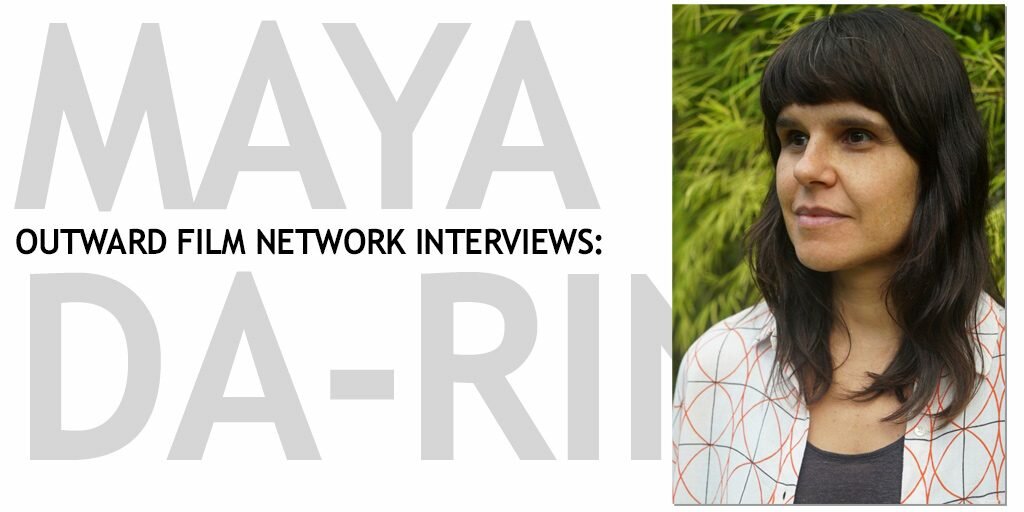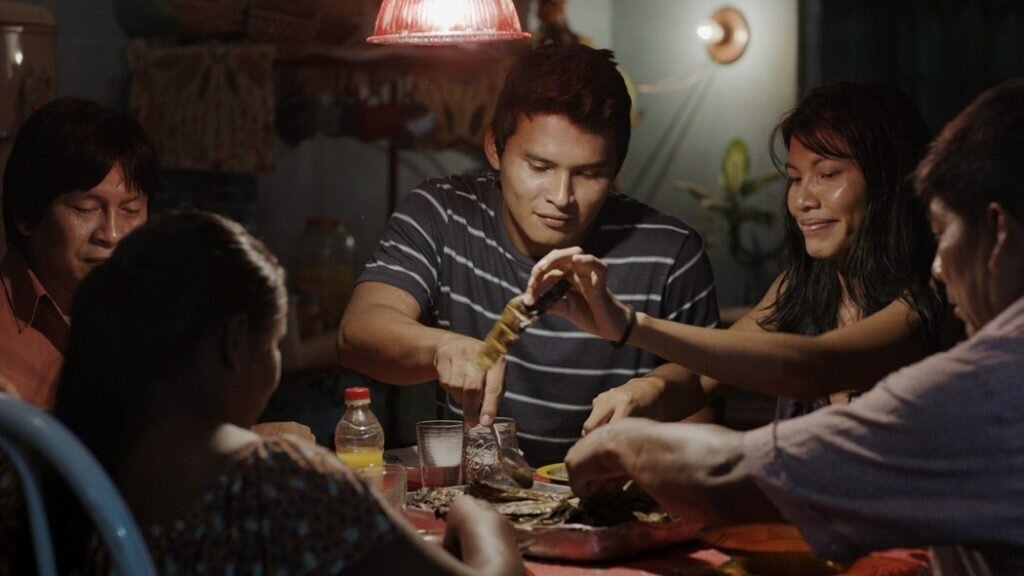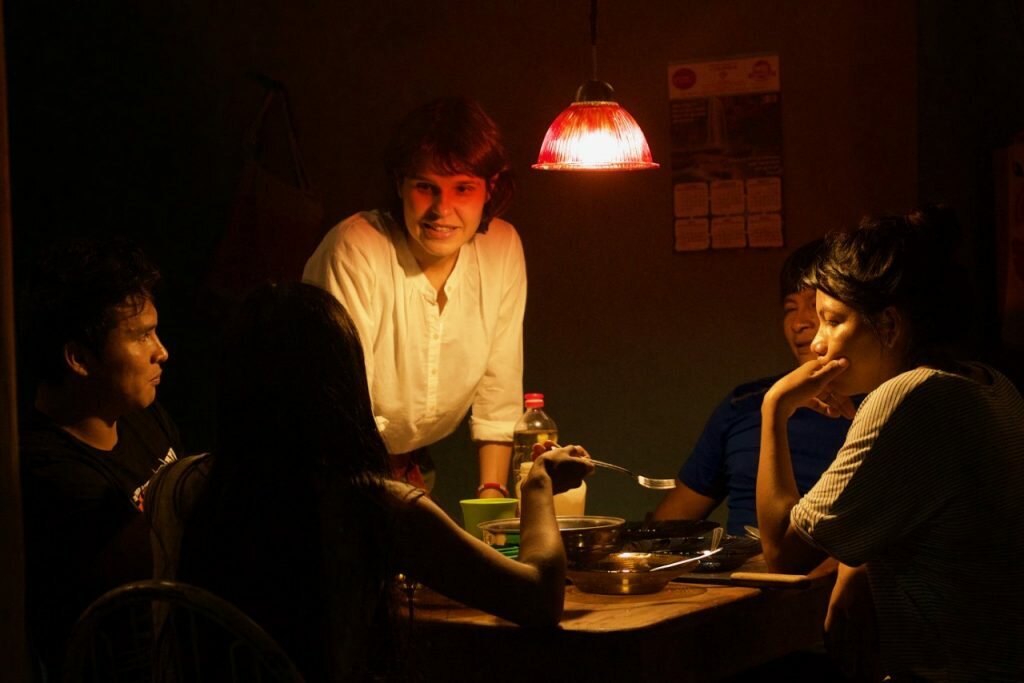
Set in the Brazilian city of Manaus, an urban landscape in the midst of the Amazon rainforest, ‘The Fever’ tells the story of Justino, a worker in the port caught between his new life and that of his indigenous people. We spoke to the director, Maya Da-Rin.
How did the film come about?
The initial idea came while I was shooting two documentaries on the border between Brazil, Colombia and Peru, in the southwest of the Amazonas. I met some indigenous families who had migrated from their villages to settle in cities and I ended up becoming friend to one of these families and the conversations we had sparked the desire to make the film.
How did you secure funding?
It took us many years. The first support we received was from Hubert Bals Fund, which enabled us to start the research and the scriptwriting. Then, our French co-producers from Still Moving, who got deeply involved with the project, came on board and helped us to raise funds abroad. In Brazil, the film was financed by Ancine (Brazilian Cinema Agency), through a call destined to author films that has now discontinued.
Isolation is a key theme of the narrative and the city of Manaus plays a big part in that. How did the decision to set it in Manaus come about?
I had to pass through Manaus to get to the border where I filmed my previous documentaries, so I had spent some time in the city during the previous year. It’s a city that has always intrigued me, because Manaus embodies in its history and landscape the contrast between different aspects of society. On the one hand, we have the forms of social organization of Amerindian societies, which originally inhabited that territory and, on the other, the western colonial and capitalist project that gave rise to the Industrial Pole, the tax free zone and to the urbanization of Manaus, which pay little attention to the forest, their forms of life and their knowledge.

What was it like filming there?
It was a very intense experience. It was a challenge, due to logistical difficulties, and also a great learning experience as we were dealing with different realities and cultures that came together to accomplish something in common, a film. Not only are most of the cast from Manaus and its surrounding areas but also most of our crew were local and this was decisive for the film.
How did you go about casting? Specifically the central role of Justino?
Casting was a long process that took more than a year. We visited the indigenous communities around Manaus and São Gabriel da Cachoeira, inviting anyone who wanted to take part in the film for a talk. I had met with more than 500 people before meeting the actors that made it to the film. Regis caught my attention because of his presence and the precision of his movements. When I first met him, I could see something of what I had imagined for Justino in his way of looking and observing things.
The sound design is crucial and really works to create the juxtaposition of the urban and rural, right from the superb opening shot. Was that something you put additional emphasis on?
Sound is a very important element to me and I try to begin hearing a film while I’m still working on the script. But it’s usually while looking for locations that sonorous ideas begin to actually take shape. For The Fever, I felt that sound could enable us to access Justino’s inner state of mind, as sound is normally able to cross these boundaries. So while researching, together with the sound director Felippe Mussel, we noticed a similarity between the forest’s high pitched insects and certain machinery used in the port area. We consequently became more attentive to these ambient sounds and, while editing the sound, we endeavored to create compositions combining sounds coming from the port and the forest up until the moment we were unable to identify their origin. I was interested in how those natural and industrial environments affected Justino physically and psychologically. They are very repetitive sounds that lead to a hypnotic state of mind resulting in the film’s feverish atmosphere.
Tell me about the song at the very end – it’s really heartfelt and moving. Was it written and/or recorded especially for the film?
The music for the end credits was created by Rosa Peixoto, the actress who plays Vanessa, and is part of a musical tradition of the peoples of the Upper Rio Negro called Ahãbeaki or Hãde Hãde. They are melodic improvisations sung by women during work and rituals. The lyrics are always improvised, but follow a metric which is taught by the older women to the younger ones. In one of the rehearsals, we asked the film’s actresses if they would like to sing a Hãde Hãde and Rosa created this one. Even having come to Manaus as a child, she knew these melodies that were sung by her mother. But, at that time, we didn’t know yet that the film would end like that. The idea came during editing, with Karen Akerman, the film editor.
What sort of distribution do you have?
The pandemic started a month before the film’s release in Brazil, so we had to postpone it and rethink our entire strategy. Even so, the audience was very engaged with the film and their feedback was very touching. Due to the pandemic, the film was released simultaneously in theaters and on streaming platforms, so that people had the option of watching it from their homes. We also organized remote screenings in indigenous villages in partnerships with indigenous filmmakers and a cycle of conversations between non-indigenous and indigenous artists, writers and thinkers from different peoples, which ended up generating very deep conversations about some of the issues raised by the film. I’ve received very touching messages from people talking about the feeling of being portrayed or watching for the first time a film spoken in their mother tongue.

This year, the film was also released in the US, Canada and France and now we are eagerly awaiting the release in UK. Our distributor, New Wave Films, is doing a very careful job despite all the difficulties of the current times and the film was released simultaneous in cinemas and online on August the 6th.
What are you working on next?
We are living in Brazil at a moment of dismantling of culture and public policies for cinema. Last week we witnessed the fire in a wing of the Brazilian Cinematheque, the largest cinematographic collection in Latin America, which had its employees fired and has been closed for over a year by the current government. In this scenario, we are going to need to reinvent ourselves and adopt guerrilla strategies if we are to continue filming. I have been working on some short film and video art projects that I intend to make with very small teams and low budget. At the same time, I’m writing the script for my next feature film, “Nightsong”, which will take place in southern Brazil. We received support from the HBF from the Rotterdam Film Festival for the development, but we still don’t know when it will be possible to raise funds in Brazil to shoot it.
Our thanks to Maya and our friends at Porterfrith for the interview.
‘The Fever’ is available to stream now.
